The Space Shuttle Challenger At A Foggy Cape Canaveral, 1984.

The Space Shuttle Challenger at a foggy Cape Canaveral, 1984.
(NASA/Department of Defense)
More Posts from Xyhor-astronomy and Others

A false-color image of the mid-infrared emission from the Great Galaxy in Andromeda, as seen by Nasa’s WISE space telescope.
Credit: NASA/JPL-Caltech/WISE Team

Planetary Nebula Abell 36
js
Density puts things in their proper places.
Reinventing the Wheel
Planning a trip to the Moon? Mars? You’re going to need good tires…

Exploration requires mobility. And whether you’re on Earth or as far away as the Moon or Mars, you need good tires to get your vehicle from one place to another. Our decades-long work developing tires for space exploration has led to new game-changing designs and materials. Yes, we’re reinventing the wheel—here’s why.
Wheels on the Moon

Early tire designs were focused on moving hardware and astronauts across the lunar surface. The last NASA vehicle to visit the Moon was the Lunar Roving Vehicle during our Apollo missions. The vehicle used four large flexible wire mesh wheels with stiff inner frames. We used these Apollo era tires as the inspiration for new designs using newer materials and technology to better function on a lunar surface.
Up springs a new idea

During the mid-2000s, we worked with industry partner Goodyear to develop the Spring Tire, an airless compliant tire that consists of several hundred coiled steel wires woven into a flexible mesh, giving the tires the ability to support high loads while also conforming to the terrain. The Spring Tire has been proven to generate very good traction and durability in soft sand and on rocks.
Spring Tires for Mars

A little over a year after the Mars Curiosity Rover landed on Mars, engineers began to notice significant wheel damage in 2013 due to the unexpectedly harsh terrain. That’s when engineers began developing new Spring Tire prototypes to determine if they would be a new and better solution for exploration rovers on Mars.

In order for Spring Tires to go the distance on Martian terrain, new materials were required. Enter nickel titanium, a shape memory alloy with amazing capabilities that allow the tire to deform down to the axle and return to its original shape.
These tires can take a lickin’

After building the shape memory alloy tire, Glenn engineers sent it to the Jet Propulsion Laboratory’s Mars Life Test Facility. It performed impressively on the punishing track.
Why reinvent the wheel? It’s worth it.

New, high performing tires would allow lunar and Mars rovers to explore greater regions of the surface than currently possible. They conform to the terrain and do not sink as much as rigid wheels, allowing them to carry heavier payloads for the same given mass and volume. Also, because they absorb energy from impacts at moderate to high speeds, there is potential for use on crewed exploration vehicles which are expected to move at speeds significantly higher than the current Mars rovers.
Airless tires on Earth

Maybe. Recently, engineers and materials scientists have been testing a spinoff tire version that would work on cars and trucks on Earth. Stay tuned as we continue to push the boundaries on traditional concepts for exploring our world and beyond.
Make sure to follow us on Tumblr for your regular dose of space: http://nasa.tumblr.com.
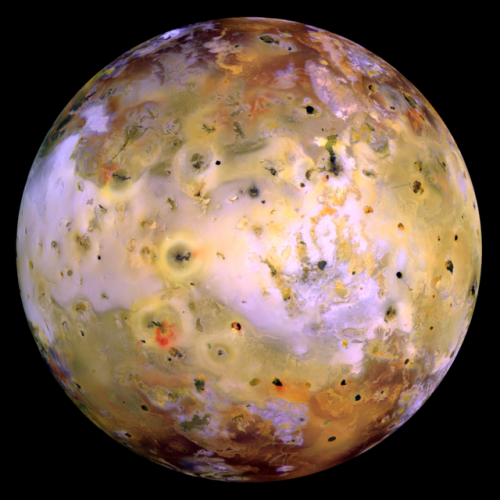
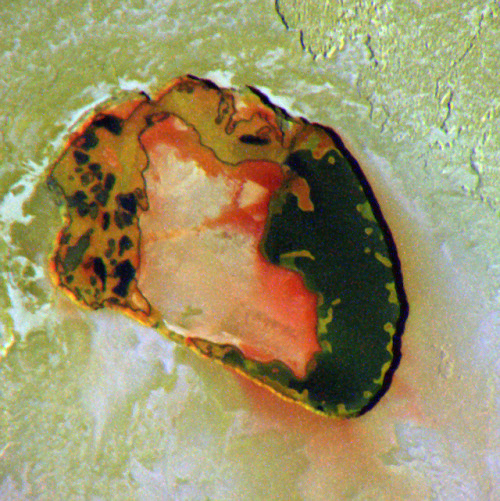
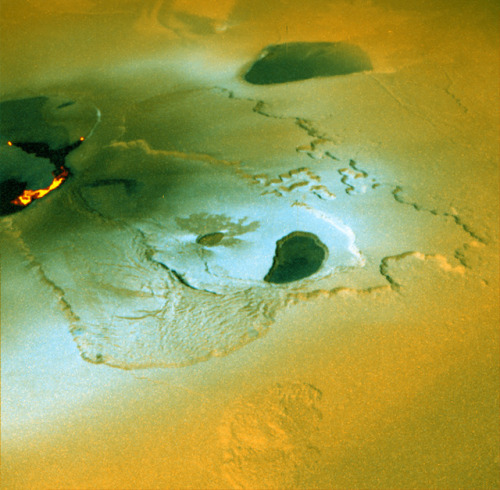
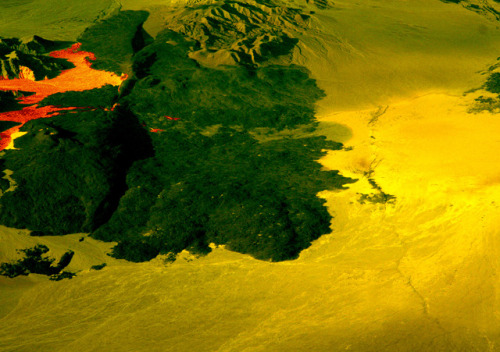
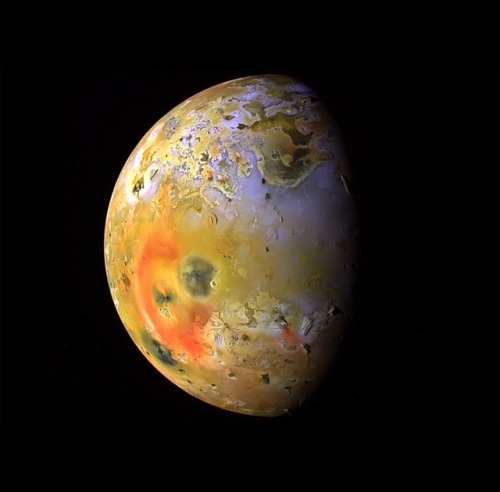
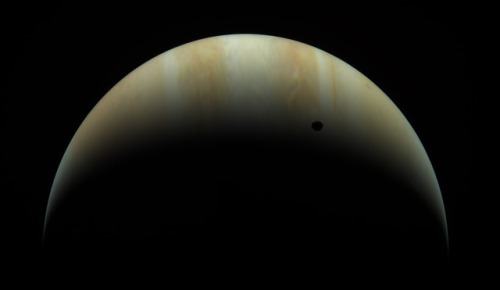
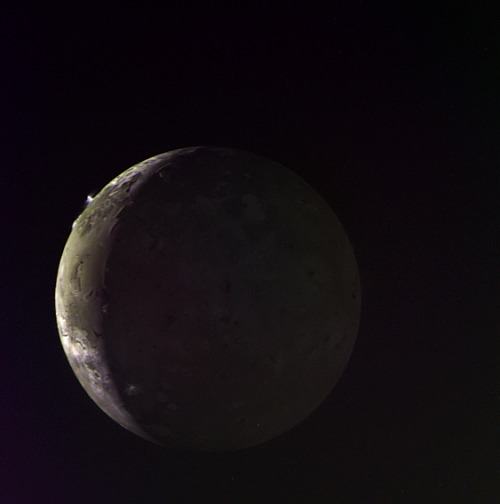
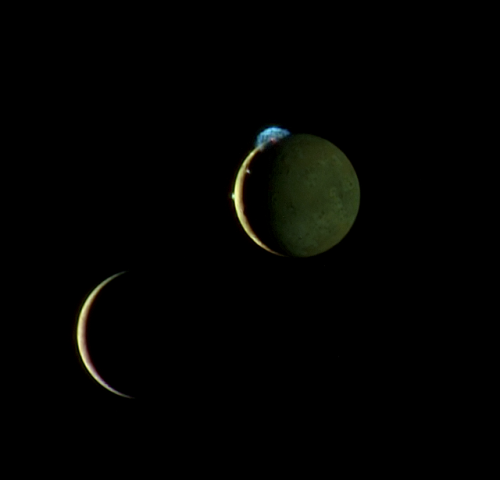
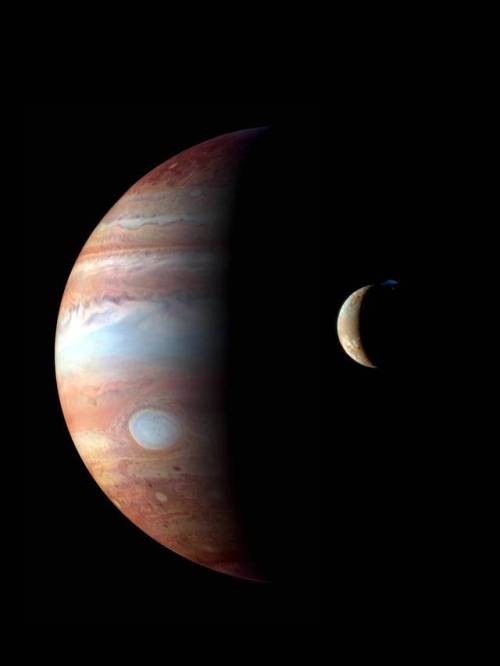
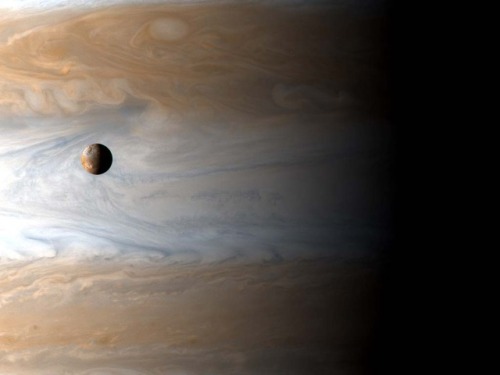
Io - The Volcanic Moon
Looking like a giant pizza covered with melted cheese and splotches of tomato and ripe olives, Io is the most volcanically active body in the solar system. Volcanic plumes rise 300 km (190 miles) above the surface, with material spewing out at nearly half the required escape velocity.
A bit larger than Earth’s Moon, Io is the third largest of Jupiter’s moons, and the fifth one in distance from the planet.
Although Io always points the same side toward Jupiter in its orbit around the giant planet, the large moons Europa and Ganymede perturb Io’s orbit into an irregularly elliptical one. Thus, in its widely varying distances from Jupiter, Io is subjected to tremendous tidal forces. These forces cause Io’s surface to bulge up and down (or in and out) by as much as 100 m (330 feet)! Compare these tides on Io’s solid surface to the tides on Earth’s oceans. On Earth, in the place where tides are highest, the difference between low and high tides is only 18 m (60 feet), and this is for water, not solid ground!
This tidal pumping generates a tremendous amount of heat within Io, keeping much of its subsurface crust in liquid form seeking any available escape route to the surface to relieve the pressure. Thus, the surface of Io is constantly renewing itself, filling in any impact craters with molten lava lakes and spreading smooth new floodplains of liquid rock. The composition of this material is not yet entirely clear, but theories suggest that it is largely molten sulfur and its compounds (which would account for the varigated coloring) or silicate rock (which would better account for the apparent temperatures, which may be too hot to be sulfur). Sulfur dioxide is the primary constituent of a thin atmosphere on Io. It has no water to speak of, unlike the other, colder Galilean moons. Data from the Galileo spacecraft indicates that an iron core may form Io’s center, thus giving Io its own magnetic field.
Io was discovered on 8 January 1610 by Galileo Galilei. The discovery, along with three other Jovian moons, was the first time a moon was discovered orbiting a planet other than Earth.

Eruption of the Tvashtar volcano on Jupiter’s moon Io, photographed by New Horizons.
Image credit: NASA/JPL/Galileo/New Horizons ( Stuart Rankin | Kevin Gill)
Source: NASA

Remnant of supernova toward the constellation of Vela, which exploded 11,000 years ago.
Image credit: NASA / Chandra x-ray Observatory
Solar System: 10 Things to Know This Week...Halloween Edition!
This week, we’re getting into the Halloween spirit with 10 spooktacular things to let your imagination run wild.

It’s not Halloween without our favorite scary characters, but what if they could stop bothering us Earthlings and go far, far away? We begin with where Dracula, Frankenstein, and other creepy creatures might choose to live if the galaxy were theirs to claim…
1. The dark (k)night.

The prince of darkness himself, Dracula, can finally seek sweet respite from the Sun. We think he’d love to live on a rocky planet named YZ Ceti d that orbits so close to its red star that it’s tidally locked keeping one side of the planet in perpetual nighttime and the other side in perpetual daytime, with a brilliant red sky (though we can guess which side Dracula will prefer).
2. Where art thou, werewolves?

Home sweet home for our furry Full Moon friends might just be on Trappist-1, a planetary system with seven planets—and where standing on one planet would mean the other planets look like six moons (some as big as our Moon in the sky).
3. Left in the dust.

We couldn’t think of anyone better to live on Proxima b than The Mummy. Hopefully this ancient monster can finally rest in peace on an exoplanet that scientists theorize is a desert planet once home to ancient oceans.
4. Cloudy with a chance of Frankenstein.

One scientific experiment we’d like to conduct: whether Frankenstein would rather live on HAT-P-11b or Kepler-3b, theorized to have fierce thunderstorms and lightning.
5. The walking dead.

We’re pretty confident that if zombies were to pick a planet, they’d want one that shares their love of death and destruction. We think they’d feel right at home on one of the pulsar planets, which are scorched by radiation because they orbit a dead star.
6. Rest your weary bones.

Skeletons need look no further: Osiris, an exoplanet that’s so close to a star that it’s “losing its flesh” as the star destroys it, seems like a perfect match.
7. Enough of the scary stuff.

For kids out there, turn pumpkin decorating into an out-of-this-world activity with space-themed stencils, from Saturn to the Sun.
8. Spooky sounds.

Cassini’s radio emissions from Saturn could give creaky doors and howling winds a run for their money. Listen to the eerie audio recordings here and find more HERE.
9. Pumpkin-carve like a NASA engineer.

NASA engineers design and build robots that can fly millions of miles to study other planets for a living—so on Halloween, they can’t help but bring that creative thinking to the grand old tradition of pumpkin carving. Take a cue from their creations with these insider tips.
10. Detective for a day.

From blades of ice on Pluto to a fuzzy, white “bunny” photographed on Mars, become a solar system sleuth and see if you can solve the stellar mysteries in this slideshow (then compare with how scientists cracked the case).
Make sure to follow us on Tumblr for your regular dose of space: http://nasa.tumblr.com.
Chasing the Shadow of Neptune’s Moon Triton
Our Flying Observatory

Our flying observatory, called SOFIA, carries a 100-inch telescope inside a Boeing 747SP aircraft. Scientists onboard study the life cycle of stars, planets (including the atmosphere of Mars and Jupiter), nearby planetary systems, galaxies, black holes and complex molecules in space.
AND in just a few days SOFIA is going on a special flight to chase the shadow of Neptune’s moon Triton as it crosses Earth’s surface!
In case you’re wondering, SOFIA stands for: Stratospheric Observatory for Infrared Astronomy.
Triton

Triton is 1,680 miles (2,700 km) across, making it the largest of the 13 moons orbiting Neptune. Unlike most large moons in our solar system, Triton orbits in the opposite direction of Neptune, called a retrograde orbit. This backward orbit leads scientists to believe that Triton formed in an area past Neptune, called the Kuiper Belt, and was pulled into its orbit around Neptune by gravity.
The Voyager 2 spacecraft flew past Neptune and Triton in 1989 and found that Triton’s atmosphere is made up of mostly nitrogen…but it has not been studied in nearly 16 years!
Occultations are Eclipse-Like Events

An occultation occurs when an object, like a planet or a moon, passes in front of a star and completely blocks the light from that star. As the object blocks the star’s light, it casts a faint shadow on Earth’s surface.
But unlike an eclipse, these shadows are not usually visible to the naked eye because the star and object are much smaller and not nearly as bright as our sun. Telescopes with special instruments can actually see these shadows and study the star’s light as it passes near and around the object – if they can be in the right place on Earth to catch the shadow.
Chasing Shadows

Scientists have been making advanced observations of Triton and a background star. They’ve calculated exactly where Triton’s faint shadow will fall on Earth! Our SOFIA team has designed a flight path that will put SOFIA (the telescope and aircraft) exactly in the center of the shadow at the precise moment that Triton and the star will align.
This is no easy feat because the shadow is moving at more than 53,000 mph while SOFIA flies at Mach 0.85 (652 mph), so we only have about two minutes to catch the shadow!! But our SOFIA team has previously harnessed the aircraft’s mobility to study Pluto from inside the center of its occultation shadow, and is ready to do it again to study Triton!
What We Learn From Inside the Shadow

From inside the shadow, our team on SOFIA will study the star’s light as it passes around and through Triton’s atmosphere. This allows us to learn more about Triton’s atmosphere, including its temperature, pressure, density and composition!
Our team will use this information to examine if Triton’s atmosphere has changed since our Voyager 2 spacecraft flew past it in 1989. That’s a lot of information from a bit of light inside a shadow! Similar observations of Uranus in 1977, from our previous flying observatory, led to the discovery of rings around that planet!
International Ground-Based Support

Ground-based telescopes across the United States and Europe – from Scotland to the Canary Islands – will also be studying Triton’s occultation. Even though most of these telescopes will not be in the center of the shadow, the simultaneous observations, from different locations on Earth, will give us information about how Triton’s atmosphere varies across its latitudes.
This data from across the Earth and from onboard SOFIA will help researchers understand how Triton’s atmosphere is distorted at different locations by its high winds and its strong tides!
Make sure to follow us on Tumblr for your regular dose of space: http://nasa.tumblr.com.
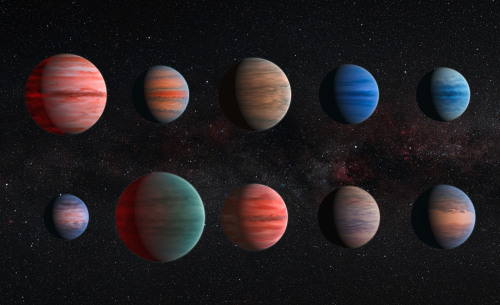
This image shows an artist’s impression of the 10 Hot Jupiter Exoplanets studied using the Hubble and Spitzer Space Telescopes. From the upper left to the lower right corner, these planets are WASP-12b, WASP-6b, WASP-31b, WASP-39b, HD 189733b, HAT-P-12b, WASP-17b, WASP-19b, HAT-P-1b And HD 209458b.
Credit: ESA / Hubble & NASA

The Extraordinary Core of a Neutron Star
Lucy Reading-Ikkanda/Quanta Magazine; Source: Feryal Özel
-
 giunmsit liked this · 4 years ago
giunmsit liked this · 4 years ago -
 kualkierputaurl liked this · 5 years ago
kualkierputaurl liked this · 5 years ago -
 sweetvillainess liked this · 5 years ago
sweetvillainess liked this · 5 years ago -
 lizardswizzle reblogged this · 6 years ago
lizardswizzle reblogged this · 6 years ago -
 playmisty4me reblogged this · 6 years ago
playmisty4me reblogged this · 6 years ago -
 playmisty4me liked this · 6 years ago
playmisty4me liked this · 6 years ago -
 kiroshi liked this · 7 years ago
kiroshi liked this · 7 years ago -
 hungrybog reblogged this · 7 years ago
hungrybog reblogged this · 7 years ago -
 michllli-blog liked this · 7 years ago
michllli-blog liked this · 7 years ago -
 ausernamewithflavor-blog liked this · 7 years ago
ausernamewithflavor-blog liked this · 7 years ago -
 letmywordsbetruth reblogged this · 7 years ago
letmywordsbetruth reblogged this · 7 years ago -
 wabbitseason reblogged this · 7 years ago
wabbitseason reblogged this · 7 years ago -
 feisiron liked this · 7 years ago
feisiron liked this · 7 years ago -
 thegoldentimefox reblogged this · 7 years ago
thegoldentimefox reblogged this · 7 years ago -
 thegoldentimefox reblogged this · 7 years ago
thegoldentimefox reblogged this · 7 years ago -
 patariteslife liked this · 7 years ago
patariteslife liked this · 7 years ago -
 the-pack-leader reblogged this · 7 years ago
the-pack-leader reblogged this · 7 years ago -
 transarkadydzyubin reblogged this · 7 years ago
transarkadydzyubin reblogged this · 7 years ago -
 transarkadydzyubin liked this · 7 years ago
transarkadydzyubin liked this · 7 years ago -
 playaround77 liked this · 7 years ago
playaround77 liked this · 7 years ago -
 bellaynia liked this · 7 years ago
bellaynia liked this · 7 years ago -
 neutralclashofcolor reblogged this · 7 years ago
neutralclashofcolor reblogged this · 7 years ago -
 awryt-awrite liked this · 7 years ago
awryt-awrite liked this · 7 years ago -
 j8blr liked this · 7 years ago
j8blr liked this · 7 years ago -
 jb-artist liked this · 7 years ago
jb-artist liked this · 7 years ago -
 sfcrewcut reblogged this · 7 years ago
sfcrewcut reblogged this · 7 years ago -
 marxmidnight liked this · 7 years ago
marxmidnight liked this · 7 years ago -
 mari99-world liked this · 7 years ago
mari99-world liked this · 7 years ago -
 artistic--condition liked this · 7 years ago
artistic--condition liked this · 7 years ago -
 happythoughthall reblogged this · 7 years ago
happythoughthall reblogged this · 7 years ago -
 happythoughthall liked this · 7 years ago
happythoughthall liked this · 7 years ago -
 natebegins1 reblogged this · 7 years ago
natebegins1 reblogged this · 7 years ago -
 natebegins1 liked this · 7 years ago
natebegins1 liked this · 7 years ago -
 v1rgos reblogged this · 7 years ago
v1rgos reblogged this · 7 years ago -
 nuagetta liked this · 7 years ago
nuagetta liked this · 7 years ago
For more content, Click Here and experience this XYHor in its entirety!Space...the Final Frontier. Let's boldly go where few have gone before with XYHor: Space: Astronomy & Spacefaring: the collection of the latest finds and science behind exploring our solar system, how we'll get there and what we need to be prepared for!
128 posts